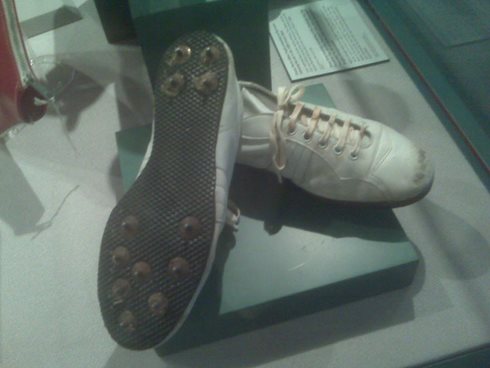Though the grass court season in tennis is woefully short, no well informed fan or expert would argue that it isn’t meticulously thought out. It’s evident in the facts and figures surrounding Wimbledon, the most famed and prestigious grass tournament; from the precise 8-mm daily mowing, to the breathtakingly fast speed at which the court can be covered by a tarp (under half a minute!), it is apparent that the lawn maintenance and care is no laughing matter.
But the fact remains that most tennis fans don’t have access to the most enigmatic of surfaces, and so have never actually played on a grass court. With fewer and fewer grass courts worldwide, plus the high cost of upkeep, we’re left to simply wonder what it’s like to slide around – and, with the rash of injuries this year, perhaps wondering if it's the safest route.
In fact, in order to adapt to the demanding and sometimes dangerous surface, players wear specially designed shoes to keep their footing. The grass at Wimbledon is 100% rye, and that requires a special adaptation in not only the play itself, but in the tennis equipment. Grass court tennis shoes have outsoles specifically designed for the extra grip needed to play on grass courts.
The pegged (or “dimpled”) soles also protect the courts themselves; unlike hard spikes or cleats which rip up football turf and soccer pitches, the innovation of the rubbery dimple pattern grip while giving a flat push off area – giving the player great directional change while minimizing slippage. And, equally important, the pegged shoes don’t destroy the courts themselves – a crucial element when it comes to long tournaments like Wimbledon, where the grass at the Championship needs to be in as good of condition as the grass on Day 1.
Because the grass market outside of Britain is small, the shoes are not sold in the US – though in Europe, grass court shoes are manufactured by all of the big name brands, including Nike, ASICS and Babolat, which this year is the official shoe sponsor of Wimbledon. Most of Nike’s major brands, for example, offer a grass-court specific shoe last, like the Zoom Vapor 9 Tour style worn by Roger Federer (who recently made headlines for putting orange soles on the grass). They offer less cushion, since the grass itself offers, unsurprisingly, soft comfort for shock absorption.
In London, we caught up with Michael Russell, an ATP Pro, who was more than happy to show off his grass court shoes (as seen in the image above). It’s worth noting that Rod Laver, in his heyday, worn a different kind of shoe altogether – a shoe that has since been banned (below). The large spikes on his sole look more like cleats than tennis shoes and, while they must have given him great grip, they also tore up the turf at alarming speeds – especially considering his many lengthy stays there.

A few more interesting facts about the courts at Wimbledon:
1 ton of grass seed used each year.
3,000 gallons of water used during the tournament.
160 court coverers on staff.